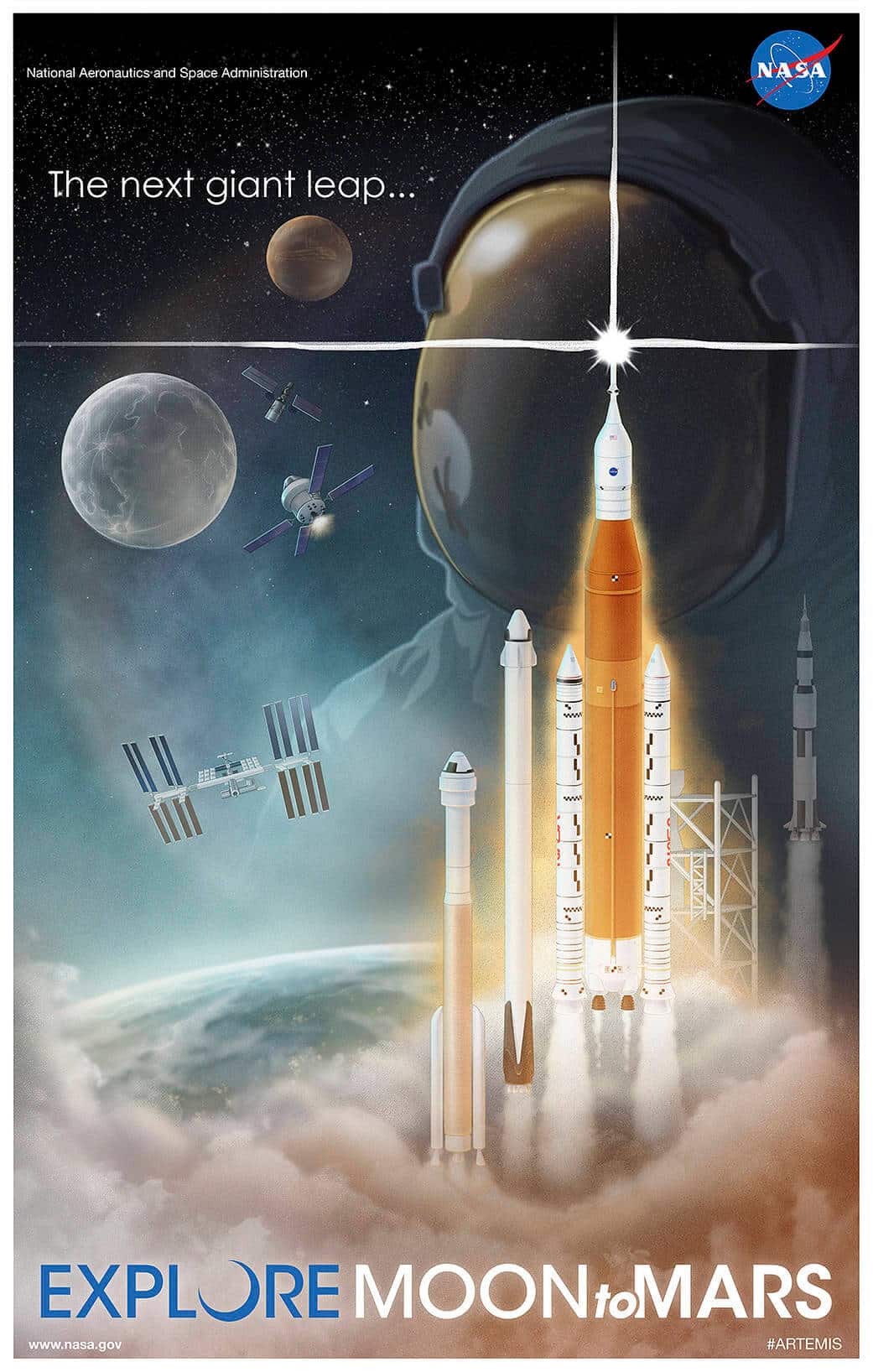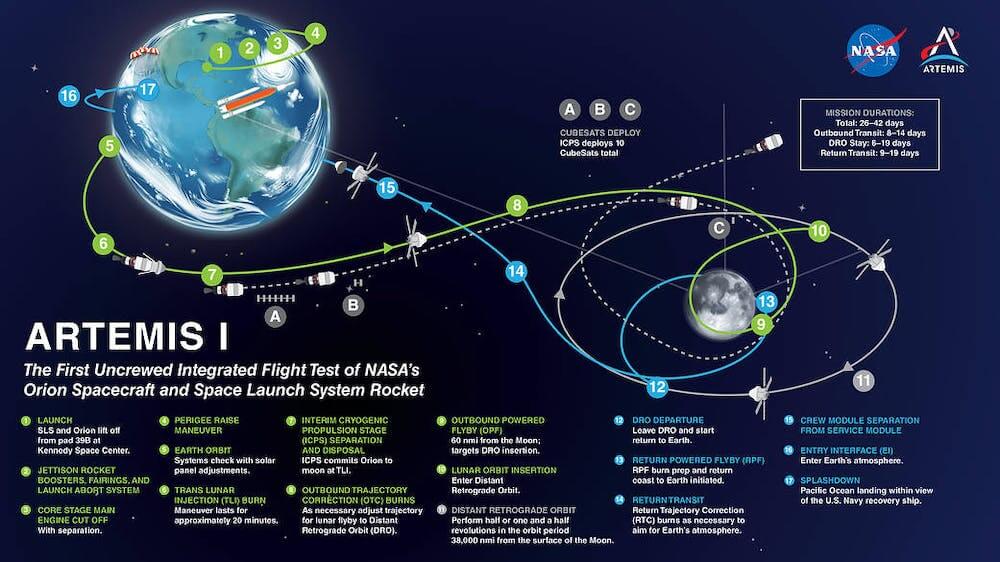The mission, whose launch is planned for Monday, August 29, 2022, is a test flight - without a crew - to the launch system into space and the Orion crew compartment. NASA hopes it will pave the way for routine exploration of space beyond Earth's orbit
By
Jack Burns, Professor of Astrophysics and Planetary Sciences, University of Colorado at Boulder

NASA's Artemis 1 mission is intended to take an important step toward returning humans to the moon after a half-century hiatus. The mission, whose launch is planned for Monday, August 29, 2022, is a test flight - without a crew - to the launch system into space and the Orion crew compartment.
The spacecraft is supposed to fly to the moon, place some small satellites and then enter orbit. NASA intends to practice operating the spacecraft, test the conditions that crew members will experience on the moon and in orbit around it, and assure everyone that the spacecraft and everyone inside can return safely to Earth.
The Conversation asked Jack Burns, a professor and space scientist at the University of Colorado Boulders and a former member of the NASA Presidential Transition Team, to describe the mission, explain what the Artemis program promises to do for space exploration and how the space program has changed in the half century since humans last set foot on it. across the moon
How is Artemis 1 different from other routinely launched missiles?
Artemis 1 will be the first flight of the new space launch system. It's a "heavyweight" launcher, as NASA calls it, the most powerful rocket engine ever to fly into space, more powerful even than Apollo's Saturn 5 system that took astronauts to the moon in the XNUMXs and XNUMXs.
This is a new type of rocket system, because it has a combination of main engines powered by liquid oxygen and hydrogen, as well as two detachable solid fuel boosters from the space shuttle. It's basically a cross between the space shuttle and the Apollo Saturn 5 rocket.
Tests and experiments are very important, because the Orion crew compartment is going to work hard. It will be in the space environment of the moon, a high-radiation environment, for a month. A very important test will be of the heat shield, which protects the cell and those inside it, when it returns to Israel at a speed of 40,000 km/h. This will be the fastest re-entry of a cell since Apollo, so it's very important that the heat shield works well.
This mission will also carry a series of small satellites that will be placed in orbit around the moon. They will perform useful preliminary science, such as taking a closer look at the craters that are in perpetual shadow and scientists think have water in them, and making more measurements of the radiation environment to see what the effects of long-term radiation would be on humans.

The plan is for Artemis 1 to take off, fly to the moon, place satellites, orbit the moon, return to Earth, safely enter the atmosphere and land in ocean water. NASA
What is the purpose of Project Artemis? What is expected in the series of launches?
The mission is a first step toward Artemis 3, which will be the first manned mission to the Moon in the 21st century and the first since 1972. Artemis 1 is an unmanned test flight.
Artemis 2, whose launch is planned a few years later, will have astronauts. It too will be the coffee mission, much like Apollo 8, which circled the moon and returned home. The astronauts will spend a longer time orbiting the moon and will check everything with a manned crew.
And finally, it will lead to a journey to the surface of the moon where Artemis 3 – sometime in the middle of the decade – will rendezvous with a Space-X starship and transfer a crew. Orion would stay in orbit, and Starship would take the astronauts to the surface of the moon. Their destination will be the south pole of the moon to check an area that scientists have not explored before to study the water ice there.
Artemis mentions Apollo. What has changed in the last half century?
The reason for Apollo in Kennedy's original vision was to beat the Soviet Union in the race to the moon. The administration didn't particularly care about spaceflight or the moon itself, but it was an audacious goal that would clearly put America first in space and technology.
The disadvantage of this approach is the old saying "when you live by the sword, you die by the sword". When the US got to the moon, it was effectively game over. We beat the Russians. So we put up some flags and did some science experiments. But pretty soon after Apollo 11, after a handful of additional missions, Richard Nixon canceled the program because the political goals had been met.
Fifty years later, it's a very different environment. We are not doing this to beat the Russians or the Chinese or anyone else, but to start sustainable exploration beyond Earth orbit.
Several goals drive the Artemis program. It involves exploiting resources in their original place, meaning using resources at hand such as water ice and lunar soil to produce food, fuel and building materials.
The program also helps create a lunar and space economy, starting with entrepreneurs, because Space-X is very much a part of this first mission to the lunar surface. The starship is not owned by NASA but it buys seats to allow astronauts to reach the surface of the moon. Space-X will then use the starship for other purposes - to transport other spacecraft, private astronauts and astronauts from other countries.
Fifty years of technological developments mean that a flight to the moon is now much cheaper and more technologically possible, and far more sophisticated experiments are possible when you just think about computer technology. These fifty years of technological progress completely change the situation. Almost anyone with financial resources can now send a spacecraft to the moon, although not necessarily with humans.
NASA's "Commercial Lunar Lander Services" initiative uses private companies to build unmanned landers to fly to the moon. My colleagues and I have a radio telescope that will fly to the moon on one of the landings in January. It just wasn't possible just ten years ago.
Artemis is an ambitious plan, but technology has come a long way in the fifty years since the last manned flight to the moon.
What other changes are there in Artemis?
NASA has said that the first manned flight, Artemis 3, will have at least one woman and very likely a non-white person as well. It might be the same person. There might be a few.
I look forward to seeing more of that diversity, because young kids who look up to NASA today can say, “Hey, there's an astronaut who looks like me. I can do it. I can be part of the space program."
For an article in The Conversation
More of the topic in Hayadan:
- The Artemis 1 spacecraft that will attack the moon has been handed over to NASA
- Israeli development - at the heart of the Artemis 1 mission: mannequins on which the AstroRad vest that protects against radiation will be tested
- Final preparations for the launch of the Artemis 1 SLS lunar launcher for launch at the end of the month

2 תגובות
Well, a bit of a reality check:
The launch system is insanely expensive, mainly because it lags behind the times. No part of the system will therefore return the shipment for another dispatch.
The system is an interesting combination of a zombie and Frankenstein's monster: it is actually a system that was brought back to life shortly after the cancellation of the "Constellation" system by Obama, mainly because they suddenly discovered that the canceled system employed thousands of workers all over the US, and that suddenly they could not find work. So they decided to go for the SLS, even though Obama's line was basically that NASA would not build spacecraft, but the free market would do it and NASA would issue scientific missions. Those who observe the system carefully will very easily discover the solid state boosters on the sides - which are nothing but the boosters used in the space shuttle (plus another segment that adds 25% more solid fuel). It will also be possible to encounter the accelerators of the first stage of the RS-25 type - the main engines of the defunct space shuttle, which were indeed disassembled when they were shut down. The entire first stage is also reminiscent of the shuttle's detachable tank in its orange coating. The Orion capsule is a remnant of the decommissioned Constellation system.
All these things (except maybe the Orion) will be used completely once. The engines have been used repeatedly in dozens of shuttle missions, as have booster parts - and now after one test flight they will find themselves on the ocean floor. This is not the way to "start sustainable research beyond the Earth's orbit".
How many such missions would the American taxpayer be willing to pay for at a cost of $4.1 billion a piece? Now that the USA is plunging into recession and inflation under the auspices of the terrible monetary policy of the current president? And above all, after the sweet nap promised by Fukuyama with his "end of history", the US wakes up and discovers that Russia, China and Iran are bypassing it in a roundabout way on the way to world domination?
So in conclusion, this is not how you build a space economy.
They open the gates of heaven little by little to the public and lie to you by trickling information their way